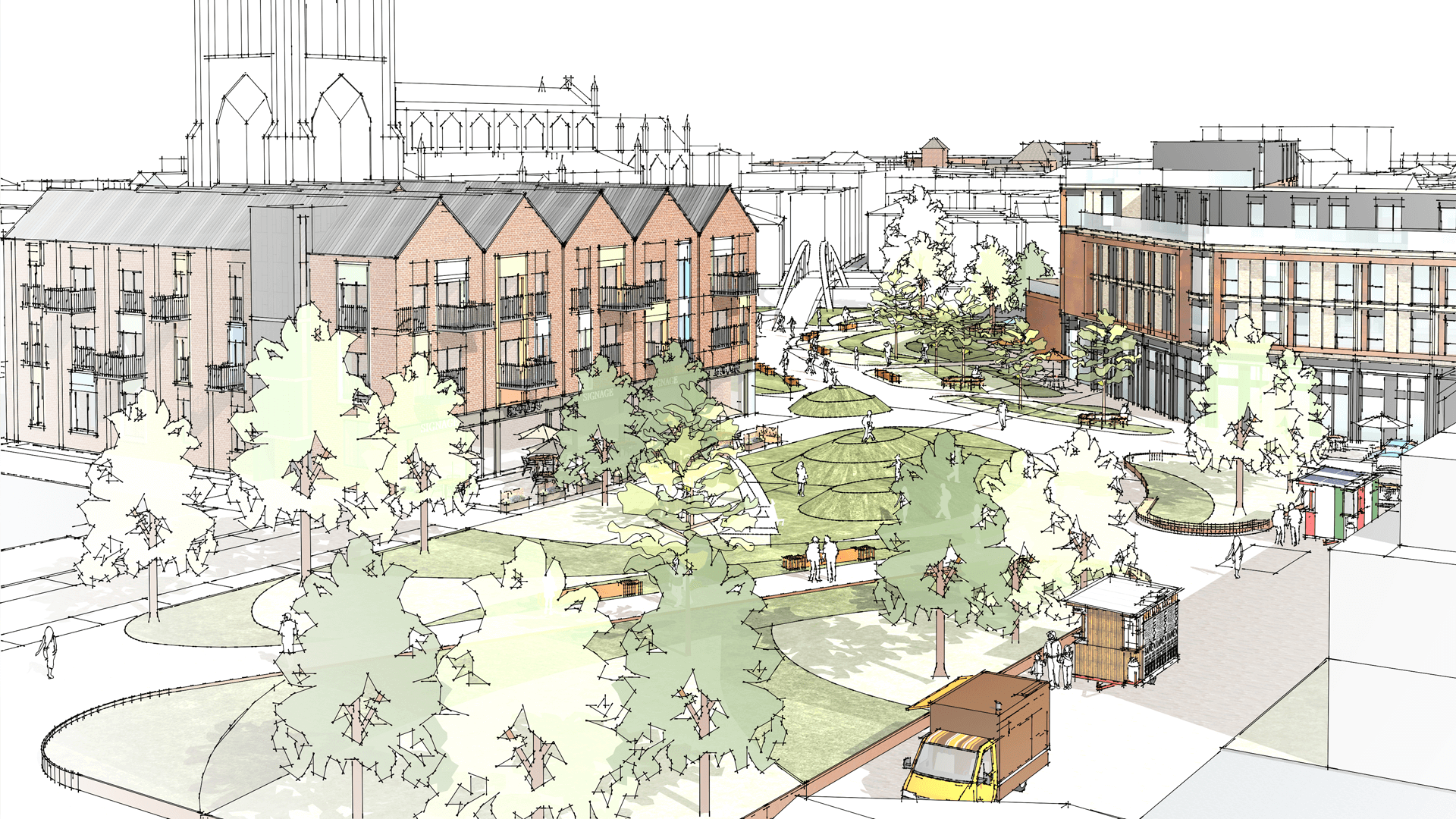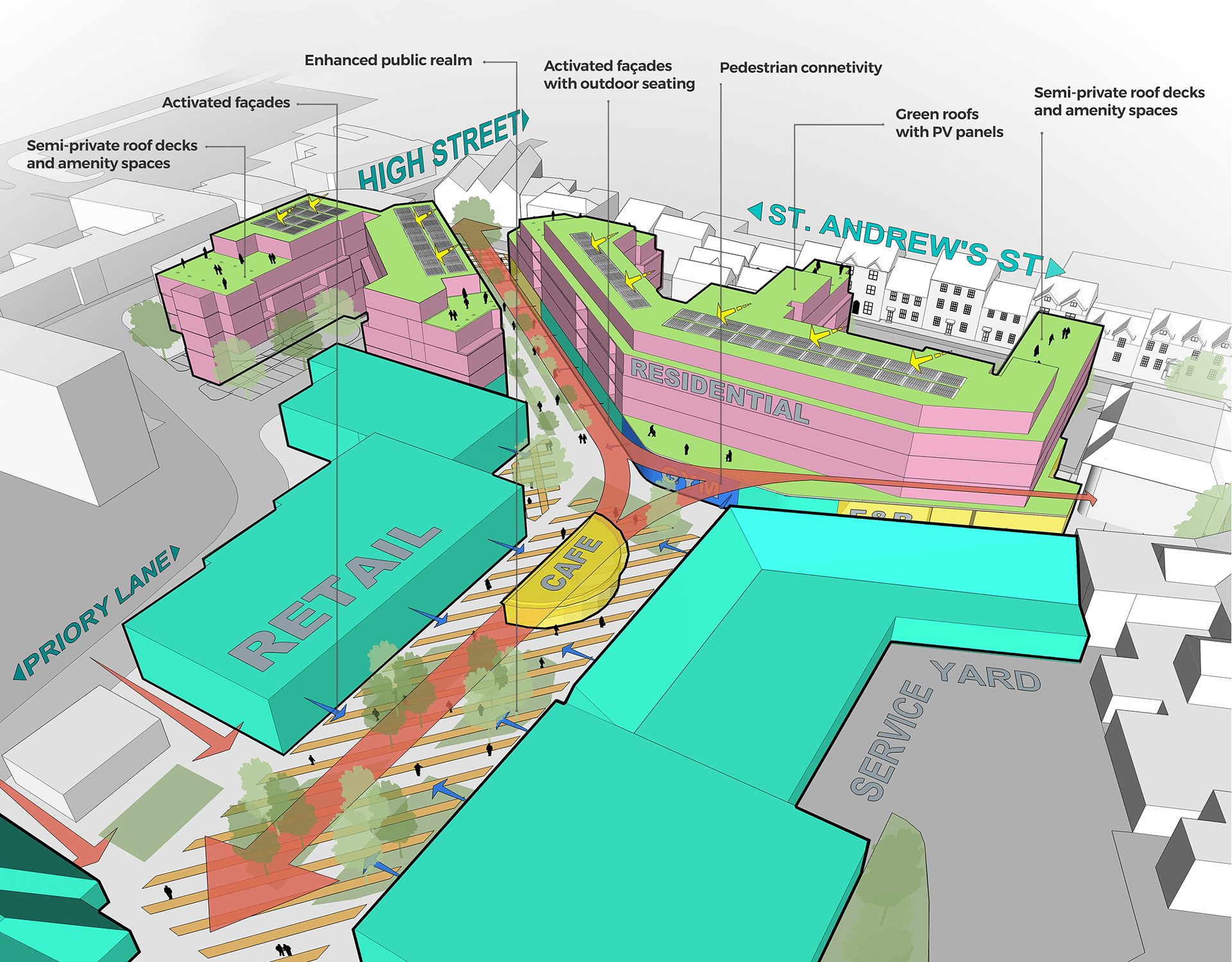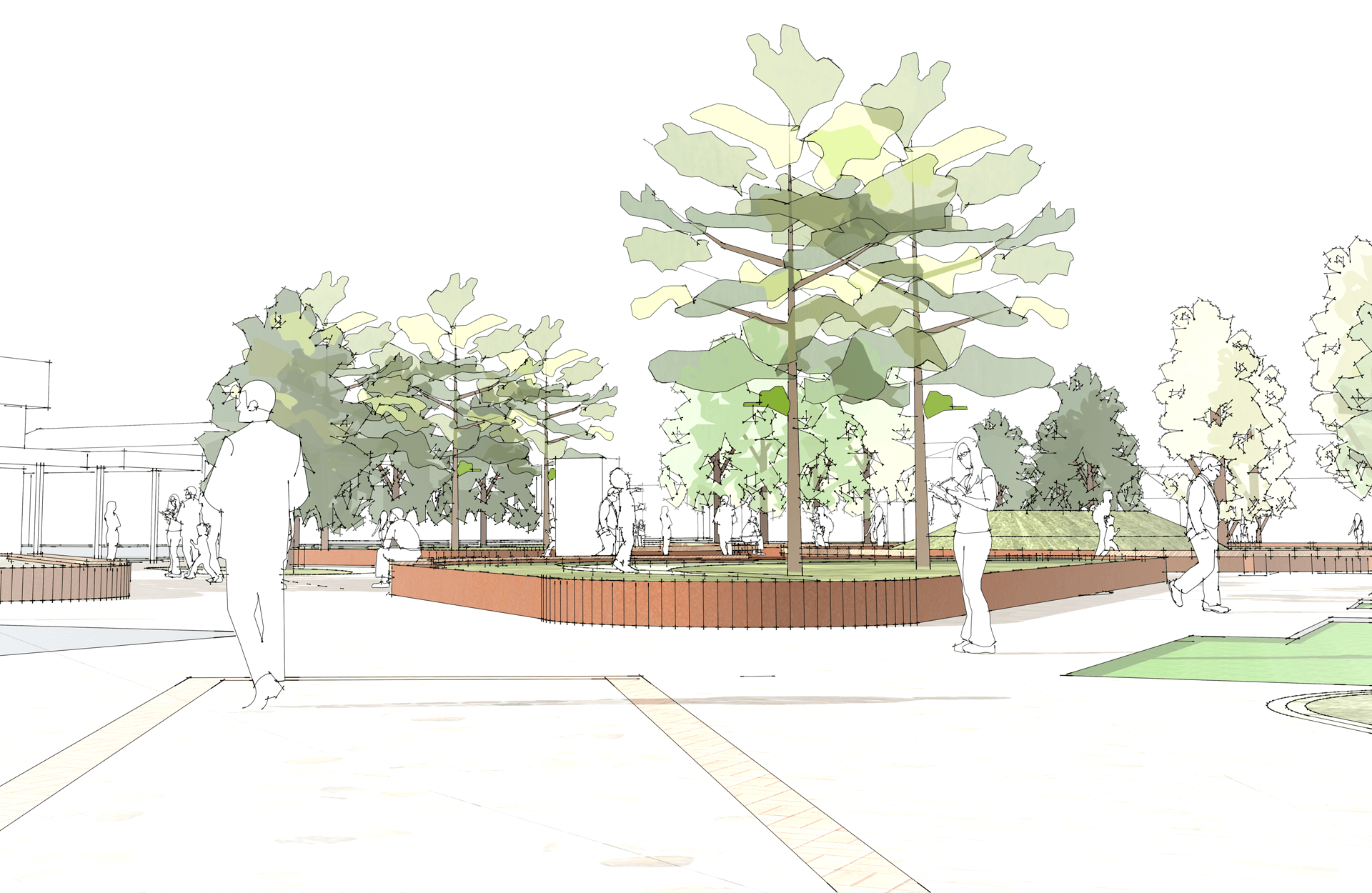It’s now a well-established fact that our urban centres are enduring a period of change, brought about by a perfect storm of factors that include climate change, changing consumer habits and the recent Coronavirus pandemic. If our towns and cities are to remain viable and relevant to our lives, they will need to adapt quickly to these changes. Where traditional town centres used to be entirely composed of retail and commercial office space, a shift towards a mix of uses is now required and could include everything from residential to co-working space, leisure to healthcare, as well as community facilities.
We also need to acknowledge that the spaces outside and between these buildings will play a critical part in the revitalisation of our urban centres. The public realm can enhance the building architecture, provide setting and context, and better connect the doors of homes, shops, workspaces and leisure facilities to the outside world. Carefully designed public realm creates spaces that truly work for people and landscape architects should be involved at every stage of the regeneration decision-making process.
As my colleague Alex Marcoulides detailed in his article here, we have recently been working with local authorities as part of the Towns Fund bidding process and have contributed towards formulating some ambitious proposals.
In particular we have been working in close collaboration with Boston District Council where we have been given the opportunity to implement some of our ideas to regenerate the town centre, increase footfall, attract visitors and enhance the look and feel of the area. This includes a programme of works to enhance the town centre by making it more pedestrian friendly and less car dominated; introduce more trees; provide space for the market and introduce gateway garden areas. This would be accompanied by works to bring Boston’s town centre heritage and leisure to life, helping to attract more visitors and increase visitor spend. It’s the perfect encapsulation of landscape design’s role in the delivery of a successful regeneration strategy.
Concept diagram detailing the important relationship between buildings and landscape
Health, social equity and environmental benefits
Landscape design in town centres is about much more than aesthetic value. For local authorities, improved public realm in urban areas can have a profound impact on public health and the management of health and social care costs. At the same time, it can improve social equity, whilst also helping to meet borough-wide environmental targets.
As acknowledgment of a growing obesity crisis gathers pace, the NHS has recommended we perform at least 150 minutes of moderate intensity exercise a week, preferably outdoors. Outdoor spaces are also a key factor in maintaining positive mental health, with many healthcare professionals now suggesting that 120 minutes contact with nature per week should be added to the NHS guidance. Well-conceived public space is therefore seen as a critical component in civic health and wellbeing provision.
The first wave of lockdowns that followed the outbreak of COVID-19 highlighted just how many people, particularly in urban areas, value outdoor and green space, with images of packed parks and seafronts blazoned across newspaper and TV news headlines. However, the lockdown period also revealed the ‘green poverty’ that exists in many towns and cities, with many disadvantaged communities having significantly less access to green space within 300 metres of their home, and presenting an even more compelling case for improved urban public realm.
Planting of trees, shrubs and the introduction of sustainable urban drainage systems can, if well designed, not only make our urban spaces more attractive, they can improve biodiversity, mitigate urban heat islands, and provide good drainage solutions to deal with changes in weather patterns and rainfall in a way that doesn’t surcharge our already overstretched drainage systems. Further still, with over 300 local authorities having now declared a climate emergency in their jurisdictions, urban greening can help absorb carbon and contribute towards borough-wide carbon-reduction targets.
We’re working with Boston District Council to implement some of our ideas to regenerate the town centre
Reclaiming urban spaces for people
The COVID-19 pandemic has also afforded us the opportunity to challenge some of the unsustainable behavioural patterns hardwired into our urban environments, not least the priorities given to cars over pedestrians. As offices and shops closed, people left their cars parked and local authorities looked to improve walkway infrastructure to allow for social distancing; in some instances, entire town and city thoroughfares were pedestrianised to facilitate outdoor socialising, eating and drinking.
Whilst levels of car usage have inevitably increased in recent months, large numbers of people continue to work at least partly from home. The introduction of low emission zones in towns and cities will also see fewer cars entering our urban centres. Fewer cars not only means less pollution, but also less congestion and less requirement for on-street parking and the clutter of road-related signage. We can stop thinking of streets as networks for cars, but rather places for people to live, work and play.
However, the opportunities that this presents can only be successfully realised if properly planned and designed with care and attention. Flexibility is key. Outdoor spaces are rarely static; they can change with the seasons and brim with the unpredictable patterns of life as people pass, meet and overlap. Well-considered, flexible urban space can fulfil a number of different functions throughout the year and help to create a city centre that’s a destination in its own right, providing opportunities to host civic events, annual shows, big-screen sporting events, winter markets or even the introduction of a summer beach.
Good landscape architecture is therefore integral to successful regeneration schemes and can help unlock the opportunities created by building architecture. Attractive, accessible and pedestrian friendly public realm will encourage people to use the space, increase dwell time and ensure returning visits. Done well, it can ensure the long-term socio-economic future of our urban centres by creating vibrant spaces in which some types of retail and other economic activity can thrive once more.
This is an extended version of an article that first appeared in Pro Landscaper magazine in April 2022.


